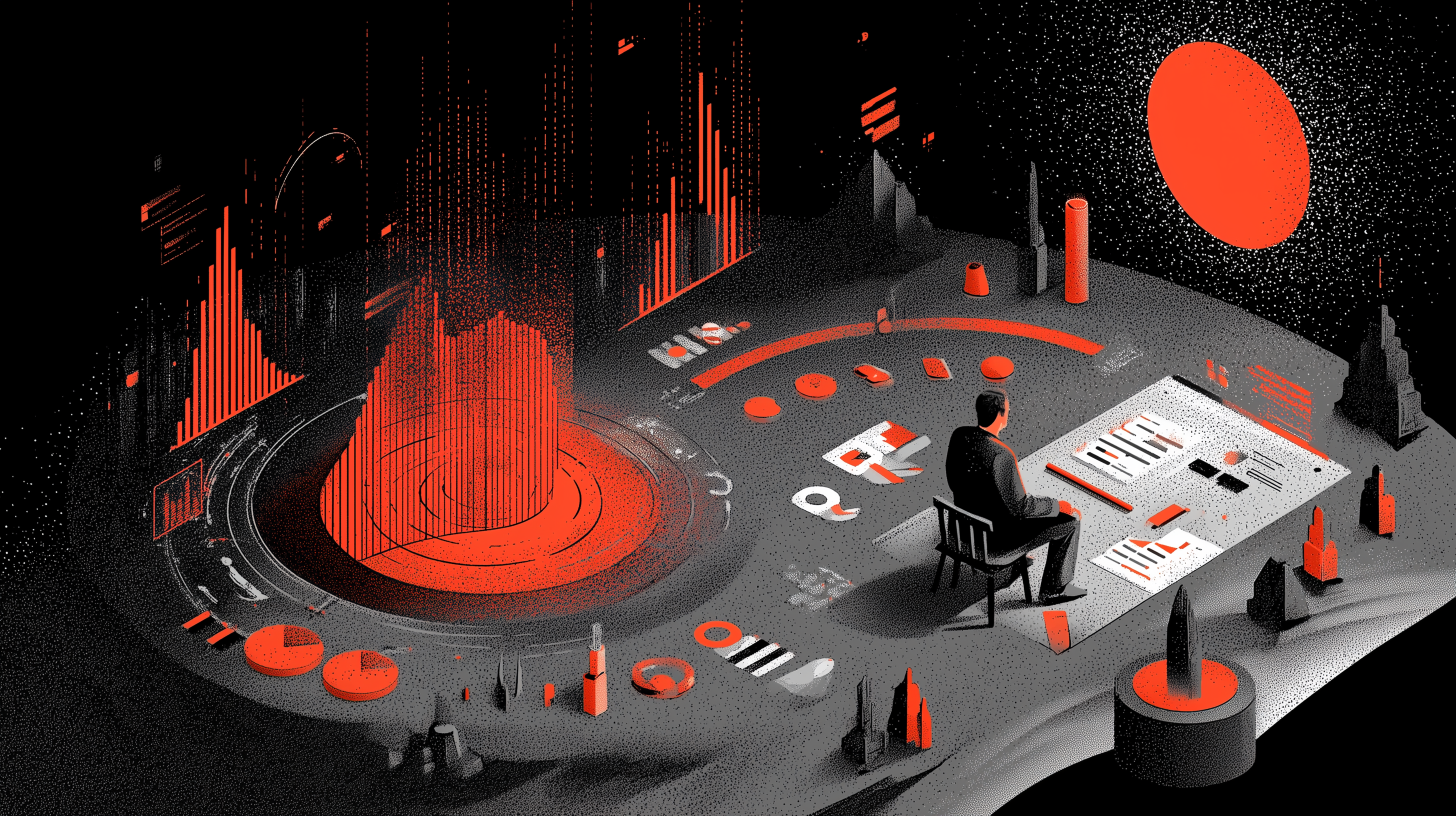The 7 content formats that generate the most engagement in 2025

Discover the 7 Most Engaging Content Formats in 2025 and Best Practices to Boost Your Social Media Performance
The Formats That Make the Difference
In an oversaturated digital landscape, capturing attention is no longer enough you need to spark engagement. In 2025, audience behavior and platform algorithms have evolved and with them, the list of content formats that truly perform.
According to a Hootsuite study, nearly half of all brands report that over 60% of their social content aims to entertain, educate, or inform, rather than sell directly. In this new reality, marketers must rethink their strategy: it’s no longer just about publishing but about choosing the right format at the right time to build connection and trust.
This article highlights the 7 most engaging content formats in 2025 and best practices to integrate them effectively into your marketing strategy.
Why Content Format Matters in 2025
Algorithms Reward Interaction
Social platforms now prioritize content that encourages comments, shares, and saves. Engagement has become both a signal of perceived quality and a driver of algorithmic amplification.
Mobile-First and Short-Form Video
Attention spans are shrinking, while mobile consumption continues to rise. According to Deloitte’s Digital Media Trends 2025 report (Deloitte), Gen Z users spend about 50 minutes more per day than average consumers on social platforms or user-generated content, an increase of roughly 54%.
The Balance Between Ephemeral and Long-Form Content
While snackable content (stories, short videos) grabs attention, audiences still appreciate more substantial formats: mini-courses, live sessions, educational carousels. In 2025, format is not just a wrapper, it’s a strategic asset.
The 7 Content Formats Dominating 2025
1. Short Vertical Videos (Reels, Shorts, TikTok)
Short, vertical videos continue to break engagement records. According to Metricool, Reels, TikTok, and Shorts lead the way in 2025. Additionally, videos under 90 seconds generate up to 2.5× more engagement than longer formats (Yaguara).
Tip: Grab attention within the first 3–5 seconds, tell a micro-story, and optimize for mobile viewing.
2. User-Generated Content (UGC)
User-generated content has become a cornerstone of engagement. According to Billo, 93% of marketers say UGC outperforms branded content. UGC posts on Instagram receive up to 70% more engagement than branded posts (Favoured).
“UGC builds trust as your audience will relate more to the guy next door than a salesman who just showed up at their front door.” — Sheraz Ali, Smarketers Hub
Tip: Encourage customers to share how they use your product, create a branded hashtag, and repost their best content.
3. Short Podcasts and Micro Audio Formats
Audio is less visual but highly strategic, it enables multitasking consumption (commuting, workouts, cooking). According to the Content Marketing Institute, 84% of B2B marketers still use blogs, but audio is rapidly gaining ground.
Tip: Produce 10–15 minute episodes tied to posts, videos, or carousels to extend engagement.
4. Carousels and Slides (Instagram, LinkedIn, Native Docs)
Carousel posts remain powerful yet underused. On LinkedIn, videos around two minutes show the highest engagement rates, highlighting that “visual + structured text” formats are gaining traction (Social Insider).
Tip: Use 5–10 slides with a strong visual and a single impactful phrase on each, and end with a clear call to action.
5. Interactive Content: Quizzes, Polls, Mini-Games
Interactivity drives participation and sharing. A campaign combining UGC and polls saw a 50% increase in shares, according to The Shelf.
Tip: Add a quiz or poll to your story or post, then share the results to create a continuous engagement loop.
6. Live Sessions and Q&As
Live content builds authenticity and proximity. On Facebook, lives lasting 30 to 40 minutes generate the highest engagement (Social Insider).
Tip: Announce your live 24 hours in advance, plan 10 minutes of content and 20 minutes of Q&A, and invite a guest or partner to boost interaction.
7. Newsletters and Editorial Micro-Publications
The return of direct brand-to-audience communication is undeniable. Well-segmented newsletters foster long-term engagement. The Deloitte Digital Media Trends 2025 report (Deloitte) confirms a dual trend: record time spent on social media and a growing desire for more personal connection.
Tip: Combine a short editorial, a strong visual, and a link to a carousel or video. Use email as a bridge between your social formats and expert content.
How to Integrate These Formats Into Your Content Strategy
Planning and Production
Organize formats through an editorial calendar (ideally using a project management tool). Automate production with templates, AI workflows, and collaborative validation.
Measurement and Experimentation
Define key KPIs such as engagement rate, shares, saves, and watch time. Experiment with different formats and lengths (e.g., 30s vs 60s videos).
Content Linking
Connect formats across platforms:
A live promotes a carousel, a carousel drives traffic to a podcast, and a newsletter highlights a video.
Best Practices for 2025
Be reactive: use social listening to spot trends and adapt your formats.
Focus on value creation: audiences prefer content that educates, entertains, or inspires rather than purely sells.
Diversify formats but maintain visual consistency.
Optimize for mobile: clear visuals and subtitles are essential, as many users watch without sound.
Prioritize efficiency: focus on 1–2 key formats first, test, then expand.
Conclusion: From Visibility to Engagement, The New Role of Formats in 2025
In 2025, engagement depends less on posting frequency and more on using the right format at the right time. From short-form video to targeted newsletters, UGC, and live sessions, formats are your strongest levers to build real connection.
Adopt a structured approach, test, measure, and iterate and you’ll turn visibility into genuine engagement. Format is no longer secondary it’s strategic.
FAQ :
Which content formats work best on social media?
Short videos (< 90s) and interactive content (polls, quizzes) lead, but carousels and UGC are also top performers.
Are short videos still effective ?
Yes — they generate up to 2.5× more engagement than long-form videos (Yaguara).
How can you measure real engagement?
Track shares, saves, and watch time instead of just likes. Analyze responses to calls to action for deeper insight.
Does interactive content require heavy resources ?
Not necessarily — a quick Instagram poll or mini quiz can be enough. Success relies on relevance and timing, not production complexity.
How do you plan multiple formats in one strategy ?
Define your priority formats, create an editorial calendar, and organize your workflow (planning > production > validation > publication), then measure and optimize.
Sources :
- “50 UGC Statistics + Strategic Implications for Your Brand in 2025” – Inbeat Agency
- “24 Key User-Generated Content (UGC) Statistics for 2025” – Backlinko
- “State of Short-Form Video in Social Media in 2025” – Metricool
- “2025 Marketing Statistics, Trends & Data” – HubSpot
- “The Top Social Media Trends for 2025” – Hootsuite
- “56+ Essential Social Media Video Marketing Statistics for 2025” – Cropink
Other Posts

Where should applied ai intervene to maximize the impact of marketing campaigns ?

How AI agentizes market data to write strategic pre-creation recommendations.

